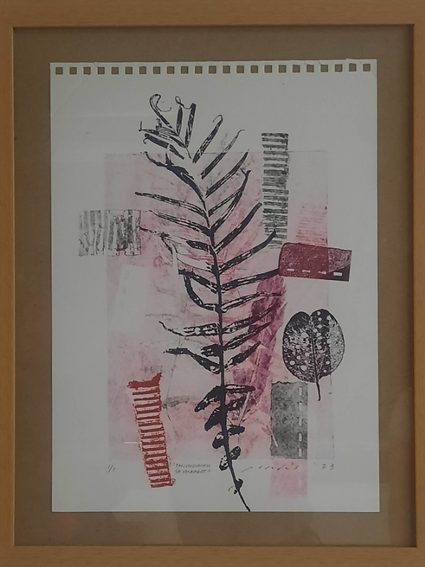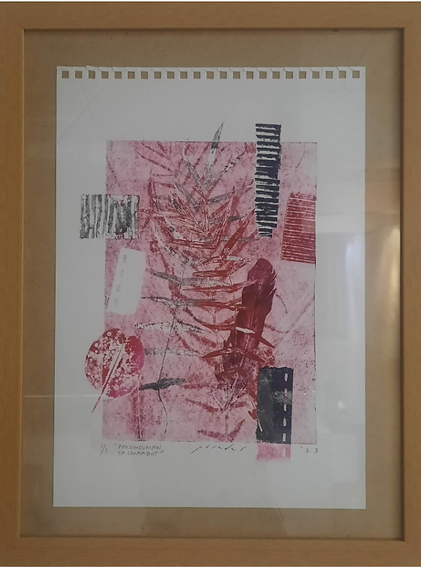Works
My works in this exhibition look into the metaphor of nature as a mother. My views on nature and my love for gardens and plants can be traced to the nourishing presence of my grandmothers in my life. The memories of my grandparents on my mother’s side bring me back to the corn fields of my childhood. On weekends, my parents would bring me and my siblings to visit my grandparents in San Remigio. There I became familiar with how they took care of the land with invigorated passion and diligence, how the fertile land gave them the income they needed the most to send their children to school all the way to college.
The nostalgia of those happy years kept bugging me, especially with the sight that the same land that was once productive and fertile is now left for the weeds to invade. The paintings ‘Field of Memories’ pay tribute to my corn farmer-grandparents who taught us the ways to know and mold the land so that we may live better lives.
Panumduman sa Umaabot Series

Panumduman sa Umaabot 1

Panumduman sa Umaabot 2

Panumduman sa Umaabot 3
Danger
This work is collage made from random materials readily available at the moment of creation. The materials were selected for their design qualities (texture, color, contrasts, etc.) as well as semiotic implications (ex. contrasting images that suggest decay, death, but also advanced technology). The warning sign DANGER reminds me of Martin Heidegger who thought about modern technology, being a source of both doom and salvation for humanity. Heidegger quotes the poet Friedrich Holderlin: “But where danger lies, also grows the saving power.

Paradise
This series is my own visual interpretation of the Genesis story of Adam and Eve in the Garden of Eden. I started exploring this Biblical theme sometime in the late 90s, after an exhibition with the Department of Anthropology of the University of San Carlos on the theme of gender and sexuality. My contribution in that exhibit was a post-coital scene of male and female lovers lying down next to each other with their sexual organs emphasized albeit not in an erotic way but rendered rather dispassionately through abstraction.

Paradise
I was then influenced by Joan Miro’s whimsical depiction of women in flat and brightly-colored biomorphic forms as well as Pablo Picasso’s similarly surreal and playful abstraction of the female anatomy throughout his work, but particularly during his transition to a more synthetic cubist style. I first wanted to explore the connections between human sexuality and nature. This resulted in abstract work focused on fertility and the lunar cycles.
Read More
